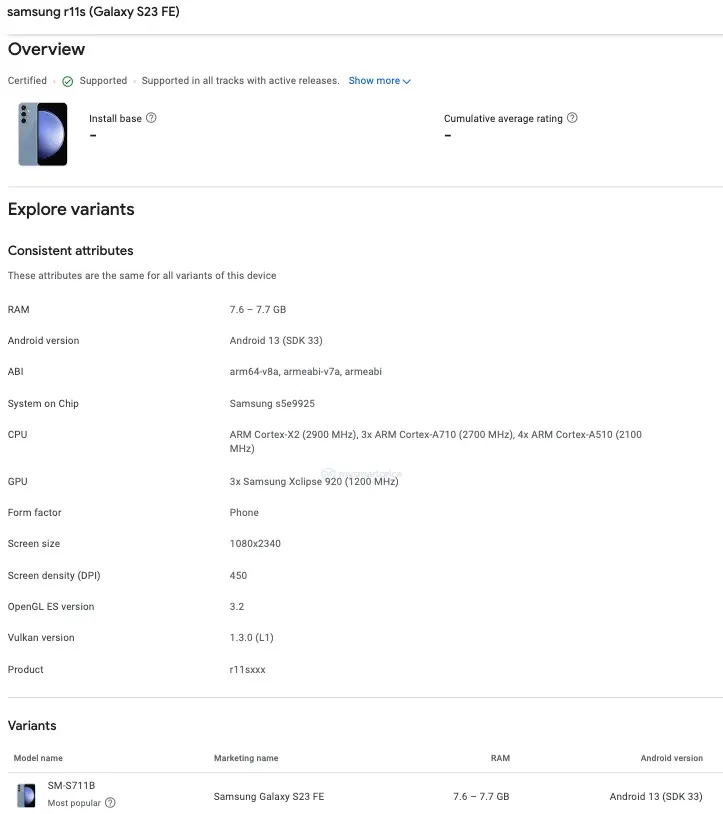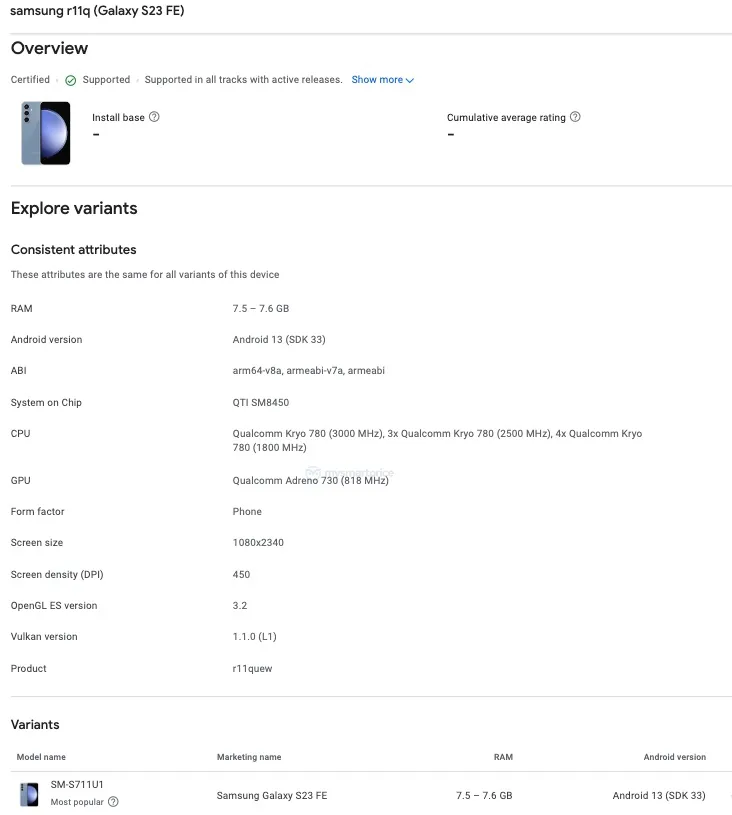Google Play Console reveals Samsung Galaxy S23 FE information
According to sources from MySmartPrice News, the Samsung Galaxy S23 FE has been cataloged within the Google Play Console database. The imagery reveals that this model will be unveiled in two distinct variants: the Samsung r11s and Samsung r11q.

The Samsung Galaxy S23 FE is not making its debut in the public domain; there have been prior media disclosures detailing certain specifications, color schemes, and design features. However, the present revelation from the Google Play Console unmistakably confirms that the Samsung Galaxy S23 FE will be available in two editions. Their sole distinction lies in the SOC: one will harness the prowess of the first-generation Snapdragon 8 mobile platform (code-named SM-S771U1), while the other will feature the Exynos 2200 (SM-S771B).

Regarding other specifications, the Samsung Galaxy S23 FE will operate on the Android 13 platform, bolstered by 8GB of RAM. It will flaunt a 6.4-inch AMOLED display, boasting a resolution of 1,080 x 2,340 and supporting refresh rates up to 120Hz. For endurance and recharging, the device is endowed with a 4,500mAh battery complemented by 25W wired charging capabilities. In the realm of photography, the device will utilize a tri-camera setup: a primary lens coupled with telephoto and ultra-wide modules. The primary camera boasts an impressive 50-megapixel resolution with OIS stabilization, the telephoto lens offers 12-megapixels, and the ultra-wide lens captures at 8-megapixels. Aesthetically, the alignment of the Galaxy S23 FE’s camera modules mirrors that of the Galaxy S23, adhering to a vertical arrangement.
Currently, Samsung’s sales strategy for these two variants remains nebulous. Historically, Samsung’s Snapdragon SOC iterations have been launched in the US and China, while other regions have been acquainted with the Exynos SOC versions. Regardless, both the first-generation Snapdragon 8 mobile platform and the Exynos 2200 have encountered notable thermal challenges. Coupled with Samsung’s traditionally conservative performance optimization strategy, the prospects for the performance of both versions appear rather somber.






